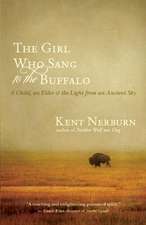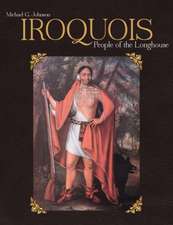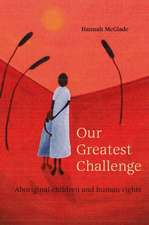The National Museum of the American Indian: Critical Conversations
Editat de Amy Lonetree, Amanda J. Cobb-Greethamen Limba Engleză Paperback – 31 oct 2008
The first American national museum designed and run by indigenous peoples, the Smithsonian Institution’s National Museum of the American Indian in Washington DC opened in 2004. It represents both the United States as a singular nation and the myriad indigenous nations within its borders. Constructed with materials closely connected to Native communities across the continent, the museum contains more than 800,000 objects and three permanent galleries and routinely holds workshops and seminar series.
This first comprehensive look at the National Museum of the American Indian encompasses a variety of perspectives, including those of Natives and non-Natives, museum employees, and outside scholars across disciplines such as cultural studies and criticism, art history, history, museum studies, anthropology, ethnic studies, and Native American studies. The contributors engage in critical dialogues about key aspects of the museum’s origin, exhibits, significance, and the relationship between Native Americans and other related museums.
Preț: 172.99 lei
Nou
Puncte Express: 259
Preț estimativ în valută:
33.11€ • 35.98$ • 27.83£
33.11€ • 35.98$ • 27.83£
Carte tipărită la comandă
Livrare economică 21 aprilie-05 mai
Preluare comenzi: 021 569.72.76
Specificații
ISBN-13: 9780803211117
ISBN-10: 0803211112
Pagini: 518
Ilustrații: 21 photographs
Dimensiuni: 152 x 229 x 29 mm
Greutate: 0.68 kg
Editura: Nebraska Paperback
Colecția University of Nebraska Press
Locul publicării:United States
ISBN-10: 0803211112
Pagini: 518
Ilustrații: 21 photographs
Dimensiuni: 152 x 229 x 29 mm
Greutate: 0.68 kg
Editura: Nebraska Paperback
Colecția University of Nebraska Press
Locul publicării:United States
Notă biografică
Amy Lonetree (Ho-Chunk) is an assistant professor of American studies at the University of California, Santa Cruz. She has conducted research on the representation of Indigenous peoples in both national and tribal museums and published articles in the American Indian Quarterly and the Public Historian.
Amanda J. Cobb (Chickasaw), an associate professor of American studies at the University of New Mexico, oversees the Chickasaw Nation’s division of history and culture and serves as the editor of American Indian Quarterly. Cobb’s book, Listening to Our Grandmothers’ Stories: The Bloomfield Academy for Chickasaw Females, 1852–1949, won the North American Indian Prose Award and the American Book Award, and is available in a Bison Books edition.
Contributors: Elizabeth Archuleta, Sonya Atalay, Janet Berlo, Mario Caro, Myla Vicenti Carpio, Cynthia Chavez, Amanda J. Cobb, Robin Maria Delugan, Patricia Pierce Erikson, Gwyneira Isaac, Ira Jacknis, Aldona Jonaitis, Amy Lonetree, Judith Ostrowitz, Ruth B. Phillips, Beverly Singer, Paul Chaat Smith, and Pauline Wakeham.
Cuprins
List of Figures
Acknowledgements
Dedication
Introduction
The National Museum of the American Indian: Critical Conversations
By Amy Lonetree and Amanda J. Cobb
Conversation One: History and Development
1. A New Thing?: The NMAI in Historical and Institutional Context
By Ira Jacknis
2. Decolonizing the Nation’s Attic: The NMAI and the Politics of Knowledge-Making in a National Space
By Patricia Pierce Erikson
3. Concourse and Periphery: Planning the NMAI
By Judith Ostrowitz
Conversation Two: Indigenous Methodology and Community Collaboration
4. Critical Reflections on the Our Peoples Exhibit: A Curator’s Perspective
By Paul Chaat Smith
5. Collaborative Exhibit Development at the Smithsonian’s National Museum of the American Indian
By Cynthia Chavez
6. The Making of ‘Who We Are’ Now Playing at the NMAI Lelawi Theater
By Beverly Singer
Conversation Three: Interpretations and Response
7. Gym Shoes, Maps, and Passports, Oh My!: Creating Community or Creating Chaos at the NMAI?
By Elizabeth Archuleta
8. “Indian Country” on the National Mall: The Mainstream Press vs. the NMAI
By Janet Berlo and Aldona Jonaitis
9. What Are Our Expectations Telling Us?: Encounters with the NMAI
By Gwyneira Isaac
10. No Sense of the Struggle: Creating a Context for Survivance at the NMAI
By Sonya Atalay
11. (Un)disturbing Exhibitions: Indigenous Historical Memory at the NMAI
By Myla Vicenti Carpio
12. “Acknowledging the Truth of History”: Missed Opportunities at the NMAI
By Amy Lonetree
Conversation Four: Questions of Nation and Identity
13. The NMAI as Cultural Sovereignty
By Amanda J. Cobb
14. Performing Reconciliation at the NMAI: Postcolonial Rapprochement and the Politics of Historical Closure
By Pauline Wakeham
15. “South of the Border” at the NMAI
By Robin Maria Delugan
16. Disrupting Past Paradigms: The NMAI and the Canadian Museum of Civilization
By Ruth B. Phillips
17. The NMAI and the Siting of Identity
By Mario Caro
Contributor Biographies
Acknowledgements
Dedication
Introduction
The National Museum of the American Indian: Critical Conversations
By Amy Lonetree and Amanda J. Cobb
Conversation One: History and Development
1. A New Thing?: The NMAI in Historical and Institutional Context
By Ira Jacknis
2. Decolonizing the Nation’s Attic: The NMAI and the Politics of Knowledge-Making in a National Space
By Patricia Pierce Erikson
3. Concourse and Periphery: Planning the NMAI
By Judith Ostrowitz
Conversation Two: Indigenous Methodology and Community Collaboration
4. Critical Reflections on the Our Peoples Exhibit: A Curator’s Perspective
By Paul Chaat Smith
5. Collaborative Exhibit Development at the Smithsonian’s National Museum of the American Indian
By Cynthia Chavez
6. The Making of ‘Who We Are’ Now Playing at the NMAI Lelawi Theater
By Beverly Singer
Conversation Three: Interpretations and Response
7. Gym Shoes, Maps, and Passports, Oh My!: Creating Community or Creating Chaos at the NMAI?
By Elizabeth Archuleta
8. “Indian Country” on the National Mall: The Mainstream Press vs. the NMAI
By Janet Berlo and Aldona Jonaitis
9. What Are Our Expectations Telling Us?: Encounters with the NMAI
By Gwyneira Isaac
10. No Sense of the Struggle: Creating a Context for Survivance at the NMAI
By Sonya Atalay
11. (Un)disturbing Exhibitions: Indigenous Historical Memory at the NMAI
By Myla Vicenti Carpio
12. “Acknowledging the Truth of History”: Missed Opportunities at the NMAI
By Amy Lonetree
Conversation Four: Questions of Nation and Identity
13. The NMAI as Cultural Sovereignty
By Amanda J. Cobb
14. Performing Reconciliation at the NMAI: Postcolonial Rapprochement and the Politics of Historical Closure
By Pauline Wakeham
15. “South of the Border” at the NMAI
By Robin Maria Delugan
16. Disrupting Past Paradigms: The NMAI and the Canadian Museum of Civilization
By Ruth B. Phillips
17. The NMAI and the Siting of Identity
By Mario Caro
Contributor Biographies
Recenzii
“Certain to become a standard text in museum studies classes and programs. That the essays are well written and compelling, passionate and yet solidly scholarly, makes this volume suitable not just for the scholar in museum studies, anthropology, or Native culture but, remarkably, an exciting read even for the general reader. Reading through these pages would instruct anyone planning to make a visit to the National Museum of the American Indian but it will, without question, be of great value to anyone interested in observing or communicating the past to the general public.”—Roger Welsch, Nebraska History
"The goal of this excellent book is not to bring closure to these discussions but to make people think by conveying the complexity of the issues surrounding the NMAI and the unique perspectives of those who come in contact with it."—Nancy J. Parezo, Western Historical Quarterly
"The seventeen essays in the collection form a magnificent contribution to the field of American Indian studies. Indeed, along with their identification of a number of representational concerns within Native North America, the collective strength of these essays makes it among the most important anthologies in the field. Like the museum it so powerfully interrogates, its importance will endure."—Ned Blackhawk, American Quarterly
"A wide variety of significant topics offers readers an understanding of the cultural, academic, and political debates that have dominated the contemporary discourse. Themes from Indian sovereignty and historical truths regarding the struggles of the Indian nations since contact to museum exhibit design and cultural sensitivity give an exceptional balance to the framework of analysis presented by the work as a whole."—T. Maxwell-Long, CHOICE
"Given the large quantity of Plains ethnographic and archaeological materials in the NMAI, this volume should be of interest to all scholars in the region. It is a useful volume for teaching about the history of anthropology and for Native American studies, it is terrific for teaching about museums, and it is just plain interesting to read."—Lynn Goldstein, Great Plains Quarterly
"Museum experts and museumgoers should read this volume. . . . The wealth of information contained within it will encourage those interested in and curious about the placement and holdings of this public museum to visit, because Natives now claim a place in this discussion and in one of the most important public spaces of this country—the National Mall."—Rebecca Bales, SAIL












